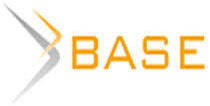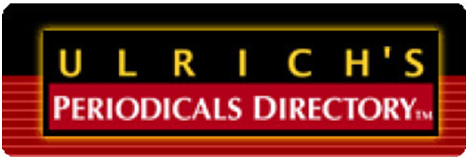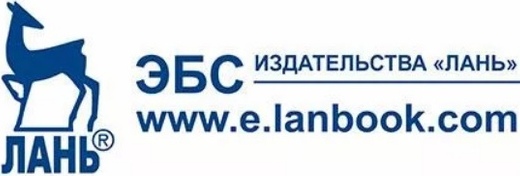Development of tourism in the USSR with the help of scientific transfer in the 1950s - 1960s.
The scientific problem of finding an understanding of the reasons for the effective and rapid growth of tourism in the 1950s-1960s in the USSR was successfully solved in this study through the author's synthesis of a complex of factors that led to this growth, and an expert analysis of the resulting complex through the prism of scientific transfer technologies. The relevance of this topic is obvious – our country has come to tourism technologies again in the last 3 decades. The analysis of well-known (both successful and negative) experience will allow us to accurately formulate the lost technologies, and understand which of them are applicable today. The types of transfer identified by the author allow us to apply the classification method to correlate the formulated factors of tourism development with the identified types of transfer. It was possible to identify 10 factors of accelerated development of tourism in the 1950s-1960s in the USSR. The method of comparative analysis allowed us to prove that 6 of the 10 factors (60%) were associated with the use of scientific transfer, and 4 (40%) were not. Of the identified types of transfer, only 4 were associated with 6 factors: technologies (2) with joint development (2) and the transfer of complete technical documentation for the manufacture, modernization and sale of finished products (2) and ideas (4). Also, the methodological base can include analysis at different levels – in the capital, in the province. So, in almost 2/3 of the factors of successful and effective tourism development in the 1950s - 1960s in the USSR (about 4 times), scientific transfer was involved, itself becoming the most important factor in the accelerated formation of Soviet mass tourism in the 1950s - 1960s.
Aleksushin, G. V. (2021), “Development of tourism in the USSR with the help of scientific transfer in the 1950s - 1960s.”, Research Result. Business and Service Technologies, vol. 7, 4, pp. 3-9, DOI: 10.18413/2408-9346-2021-7-4-0-1
















While nobody left any comments to this publication.
You can be first.
Abukov, A.H. (1983), “Tourism at a new stage: social aspects of tourism development in the USSR”, Moscow, Profizdat, Russia.
Aleksushin, G.V. (2002), “Grushinsky festival – Samara contribution to world culture”, Pedagogical process as a cultural activity. Materials and abstracts of the ivth International Scientific and Practical Conference, October 29–November 3, 2002, In 2 vols, Vol.1, Samara, pp. 492-494.
Aleksushin, G.V. (2020), The history of domestic tourist frame kayaks: from Nicholas II to Soviet water tourists, [Online], available at: https://zen.yandex.ru/media/id/5ec000bb7f5192548fb26d8f/istoriia-otechestvennyh-turistskih-karkasnyh-baidarok-ot-nikolaia-ii-do-sovetskih-turistovvodnikov-5f7ea8cc1e2da6289e66d8ee (Accessed: 10.10.2021).
Aleksushin, G.V. (2000), “Postindustrial Russia and the West”, Samara Historical Yearbook, pp.86-93.
Aleksushin, G.V. (2014), “Development of a complex of medium-sized accommodation facilities as the basis of modern hotel service in Samara”, Bulletin of the Samara State Economic University, 1, pp. 54-57.
Aleksushin, G.V. (2018), Tourist and recreational cluster and its elements, Samara, Russia.
Aleksushin, G.V. and Burmistrova, V.A. (2019), “Recreation centers and camp sites as a means of accommodation in the Fedorovsky meadows of the Samara region”, Modern Science, 6-2, pp.25-30.
Aleksushin, G.V. and Burmistrova, V.A. (2021), “Accommodation facilities on the Kopylovo peninsula of the Samara region”, Modern Science, 2-2. pp. 53-59.
AxL-326. AxL-424. 47K. 47K/r. 47K/ed. 47K/red. 47K/k. 47D. 47D/r. 47D/ed. 47D/red. 47D/edd. 47D/redd. 47D/k. 47BD. EW7/N VEB Waggonbau Ammendorf. Berlin, 1972.
Chernov, V.A., Kurbanova, L.M. and Zamesova, O.M. (2017), History of domestic hospitality (1918-2017), Khabarovsk, Russia.
CSAAU (Central State Archive of the Supreme Authorities and Administration of Ukraine), F.R 4672, Inv.1, C.393.
Gorozhanin, A.V., Rybnikov, V.V., Ippolitov, G.M., Efremov, V.Ya. and Aleksushin, G.V. (2005), “Russia is our sacred power”: the Past with us: A Textbook in 5 books. Edited by V.V. Rybnikov, Vol. 5, From the superpower of the USSR to post-Soviet Russia (1945-2000), Samara, Russia.
Gorozhanin, A.V., Rybnikov, V.V., Ippolitov, G.M., Efremov, V.Ya. and Aleksushin, G.V. (2006), Rus – Russia – USSR – Russia: stages of a long journey, A textbook for students on the course Domestic History, Edited by V.V. Rybnikov, Vol. 2, On the historical spiral of the ups and downs of the turbulent XX century: “in the year of the bow, in the year of battles, when lead rains ...”, Samara, Russia.
Handbook of serial transport vessels, (1964), Vol. 1. Cargo and passenger vessels, Moscow, Russia.
History of Russian tourism, (2009). Under the general editorship of D. p.n, prof. T.I. Vlasova: Monograph. St. Petersburg, Publishing House D.A.R.K,
Russia.
Information Weitstrecken-Büfettwagen Typ 47-BD, (1965), VEB Waggonbau Ammendorf, Berlin.
Information WPW-Ayl, (1969), VEB Waggonbau Ammendorf, Berlin.
Kolupanova, I.A. (2015), “State social insurance – a form of development of social tourism in the regions of Siberia in the 1950s and 1960s”, Bulletin of Kemerovo State University, 2-7 (62), pp.16-20.
Popov, A.D. (2016), “"Soviet Riviera": recreational tourism of foreign citizens on the Black Sea coast of the USSR in the 1960s-1980s”, Modern problems of service and tourism, 10 (4), pp.102-114.
Profiliertes Programm fortschrittlichen, (1981), VEB Waggonbau Ammendorf, Berlin.
Project 737. Medium-haul cargo and passenger steamers of the USSR in the middle of the XX century, (2013), Part II, Ufa, Infiniti LLC.
Ryzhkova, R. and Grushko, S. (1997), Development of foreign tourism in Sochi (1954-1987), Sochi, Russia.
SARF (State Archive of the Russian Federation), F.R 9612, Inv.1, C.441, 541; Inv. 3, C. 326, 918, 1853.
Weitstrecken-Speisewagen SK.k. VEB Waggonbau Ammendorf, Berlin, 1975.